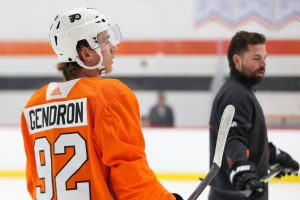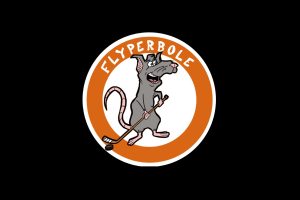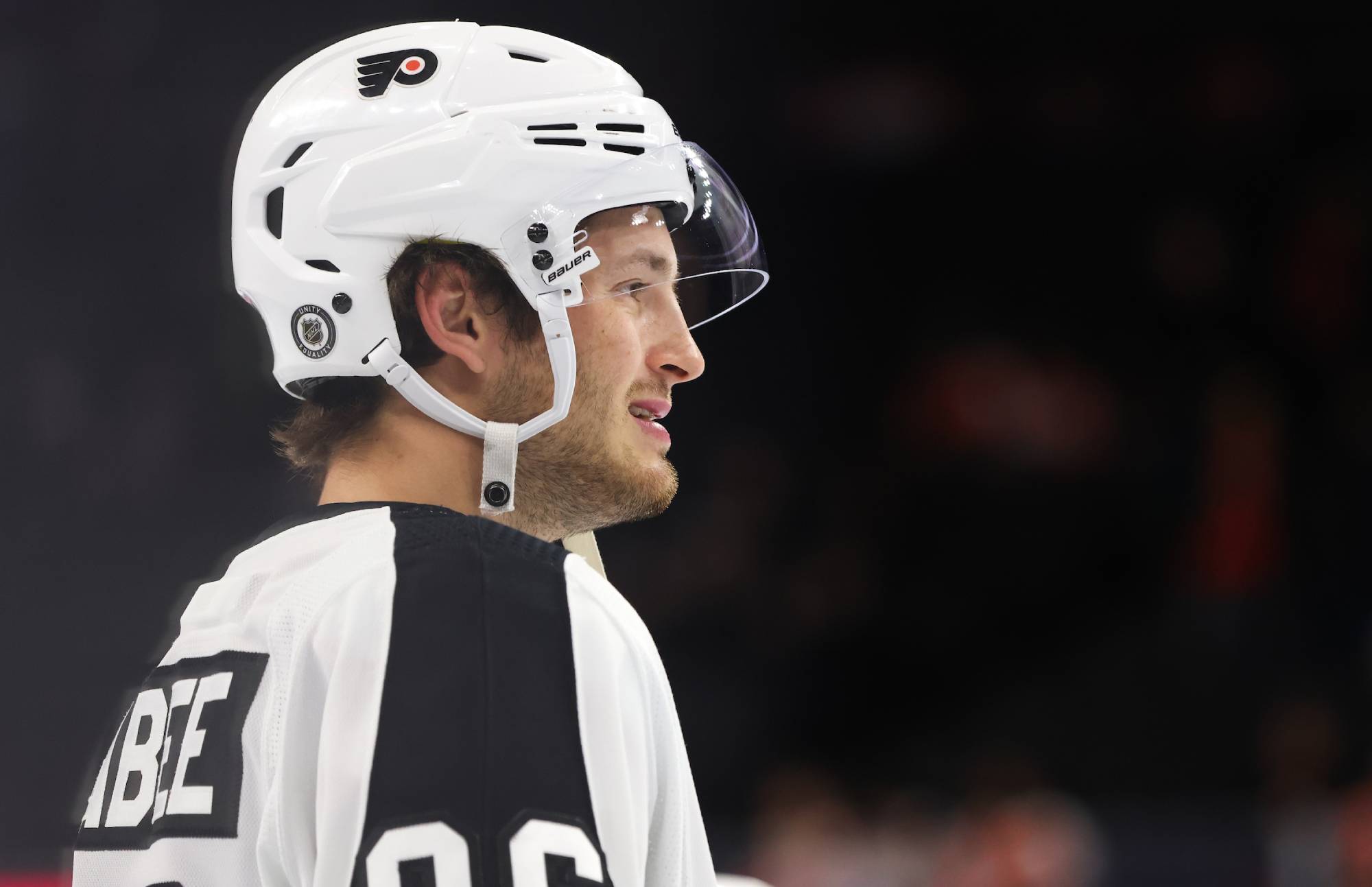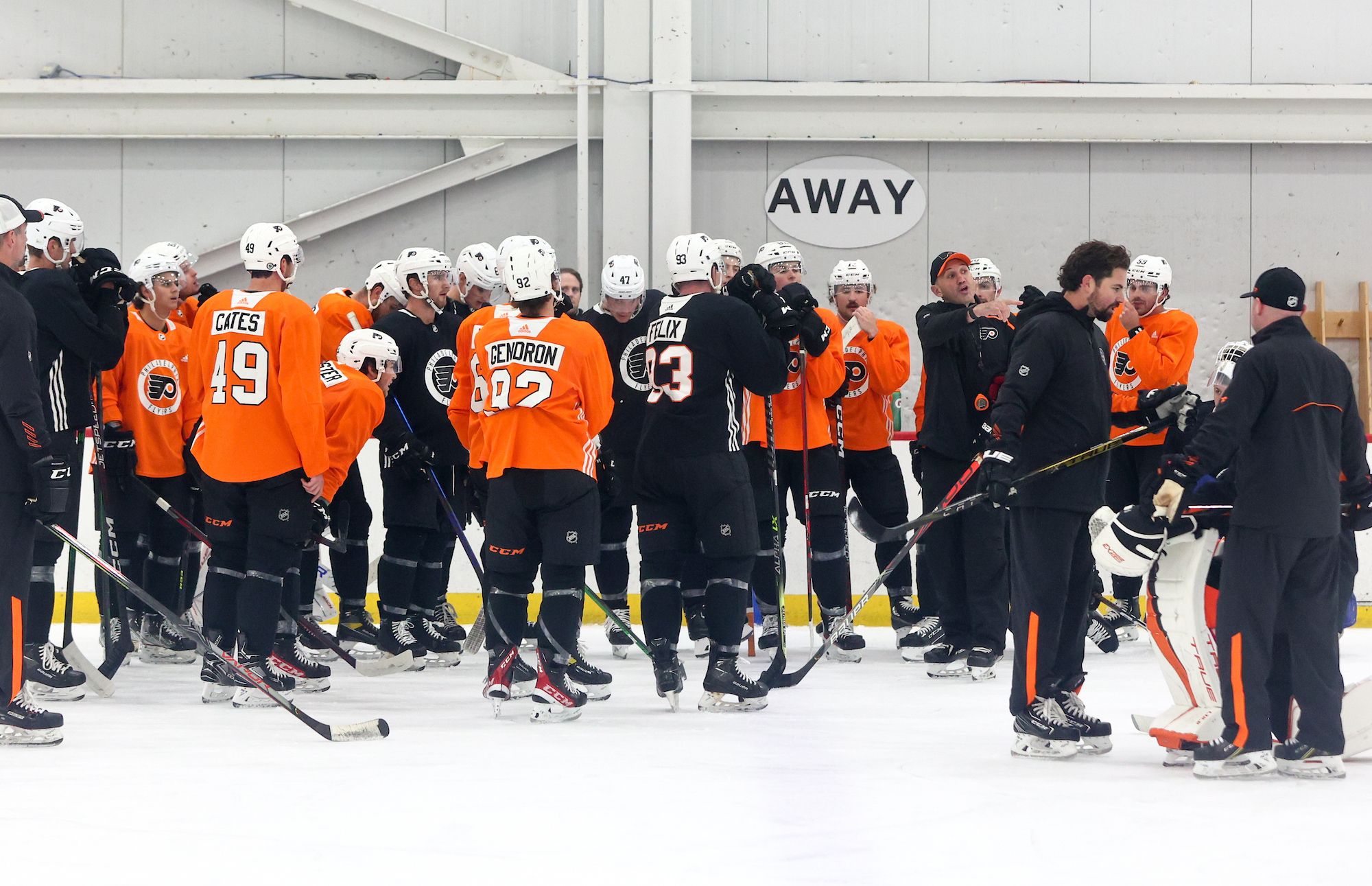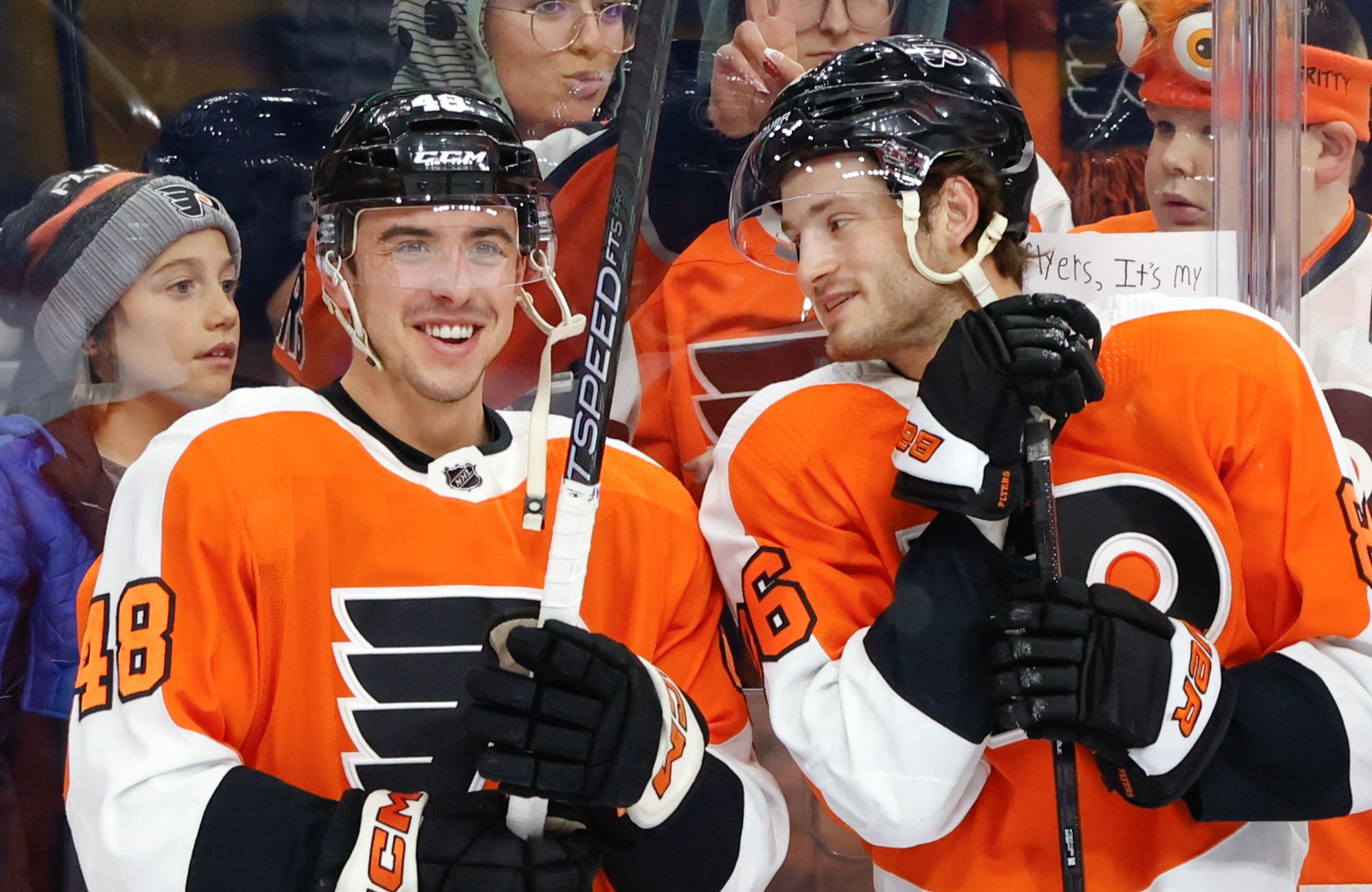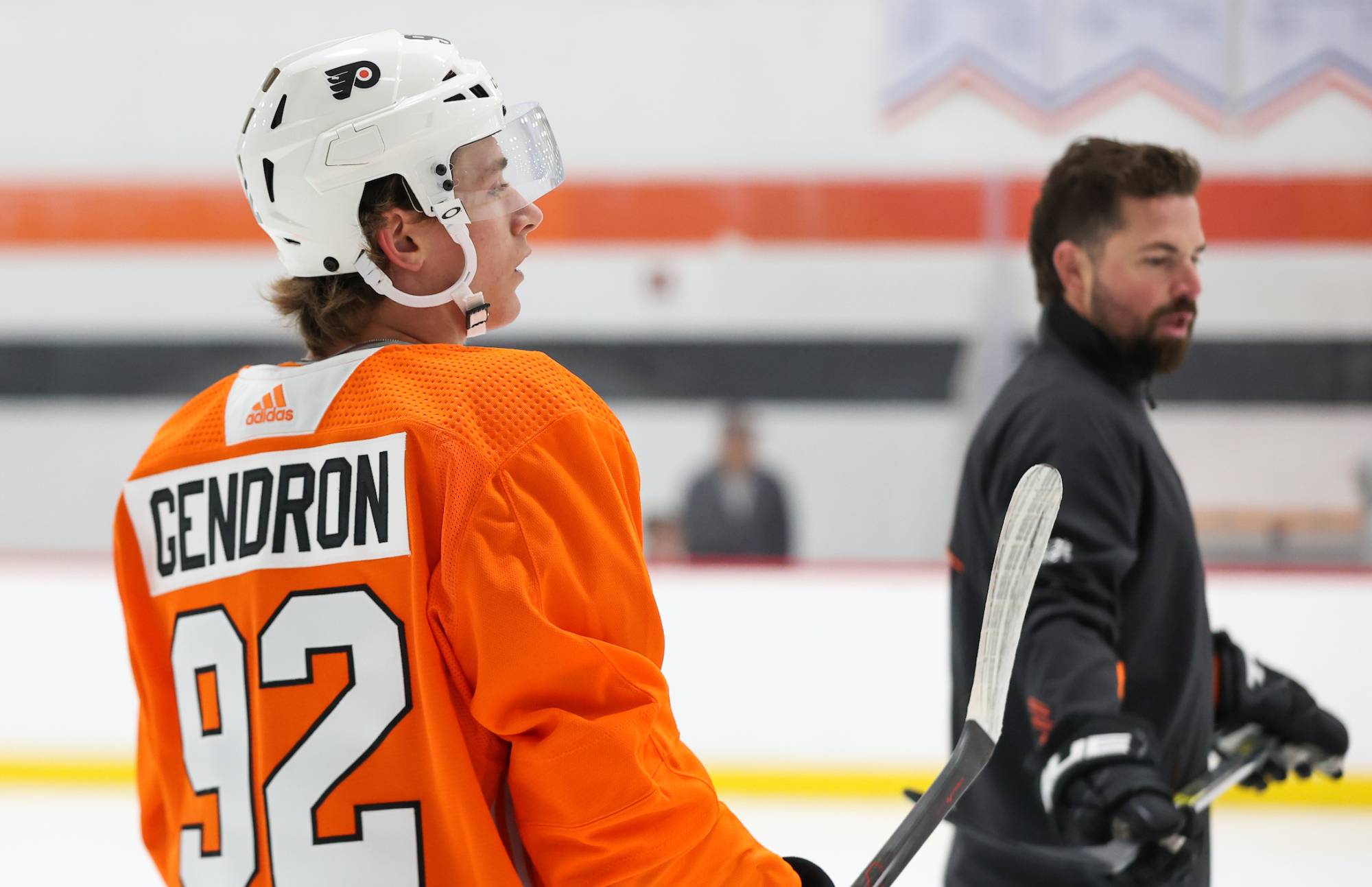Morning Observations is a feature where we break down the previous night’s game with an analytical eye.
#1: Flyers got better of head-to-head Pens rivalry this year
The Pittsburgh Penguins have undeniably had a better season this year than the Philadelphia Flyers — not only have the Pens already clinched a playoff berth, they are probably one of the three favorites (along with the Capitals and Sharks) to win the Stanley Cup in June. But in terms of the head-to-head battle between the cross-state rivals, the Flyers more than held their own. The teams split the season series 2-2, but by the numbers, Philadelphia got the better of play on the whole. In a little over 194 minutes at 5v5, the Flyers had the edge in both score-adjusted Corsi (55.45%) and in scoring chance differential (98-72). They also won the all-situations xG battle in all four contests.
Of course, this doesn’t change the fact that the Flyers’ season will almost surely be remembered as a major disappointment, and rightfully so. But don’t forget that last season, the Flyers could barely move the puck up ice against the Mike Sullivan-coached Penguins. They were completely flummoxed by the constant pressure style of their rival, and it took a game where Pittsburgh had absolutely nothing at stake for the Flyers to even squeeze out one win over them. This year, Philadelphia dealt with their rivals much better, and in my opinion, that does bode well for matchups in the future.
#2: Shot quality not an issue last night
The Flyers have certainly had their issues this season when it comes to generating quality chances, particularly at even strength. While they rank as a respectable squad in terms of shot attempt differential at 5v5 (15th in the NHL), they don’t fare nearly as well after those shots are adjusted for location and quality, as shown by their 22nd rank in the xG statistic. In the Flyers’ defense, I do believe there has been a conscious effort to change this over the past few months (they rank 11th in score-adjusted xG in 2017 at 50.74%) but they do still have a tendency to fall back on the “point shots and pray” strategy when in tough situations.
But in the final game against their biggest rival, Philadelphia absolutely dominated the shot quality battle. The team’s 61.34% score-adjusted Corsi yesterday was impressive, but that paled in comparison to the eye-popping 74.87% in the 5v5 Expected Goals stat. The Flyers racked up 2.61 xG and allowed just 0.87 per Corsica, and the scoring chance numbers from Natural Stat Trick back that up as well. Philadelphia led in regular chances at 5v5 29-11, and in high-danger chances 12-2. In fact, this was the Flyers’ best xG game at even strength this season, and it came against a formidable opponent.
NHL.com Report & Highlights | Corsica.Hockey Game Recap Page | HockeyStats.ca Recap | NaturalStatTrick Recap | HockeyViz.com | BSH Recap | Meltzer’s Musings
#3: Fair to note that Pens were shorthanded
This was a road victory (on the second night of a back-to-back, no less) that the Flyers should take a great deal of pride in, against a high-end foe. But the lineup that Pittsburgh dressed last night is nowhere near the one that head coach Mike Sullivan hopes to use in Game 1 of their first round playoff series. The Pens are dealing with a number of injuries to key players, including Evgeni Malkin, Carl Hagelin, Jake Guentzel, Kris Letang, Trevor Daley, Olli Maatta and Ron Hainsey all out. That’s not to say the Penguins don’t still have talent — Sidney Crosby, Phil Kessel and Patrick Hornqvist are all great up front, and Brian Dumoulin and Justin Schultz drive play well on the back end. But this wasn’t the deep, fearsome Pittsburgh squad that the Capitals fear to face in the postseason. That doesn’t make the Flyers’ win meaningless, but it does provide some perspective to help understand how a flawed Philadelphia squad could so thoroughly beat down the powerhouse Penguins.
#4: Time to view Weal as a play-driver?
For all of the team’s flaws, the Flyers do have a number of players — Michael Raffl, Matt Read, Sean Couturier — who essentially serve as “Corsi inflators” to whatever line they are placed on. Once these types of players are identified, line construction becomes a little bit easier. These role players clearly have the ability to get the puck into the offensive zone and keep it there, so the task of the coach becomes surrounding them with those who can take that puck possession and create tangible goal production out of it. It’s still early in the NHL career of Jordan Weal, but so far, he’s showing the ability to drive play in the right direction, regardless of linemates.
Placed on the Filppula line this week, Weal’s presence has turned a unit that had become a Corsi liability into one that either holds its own or actually controls the territorial battle. Last night, they were probably the Flyers’ most effective line, scoring twice and and posting score-adjusted Corsi rates over 66%. Considering Filppula entered this game with a 5v5 Corsi relative to his teammates of -3.18% and Weal was at +9.18%, it’s easy to infer that Weal’s presence on the line is a big reason why play is moving in the right direction with Filppula on the ice right now.
#5: Pittsburgh ate Flyers’ PK alive
Philadelphia may have dominated this game at even strength, but the Penguins were able to close some of that gap due to their potent power play. While the Pens managed just two high-danger chances at 5v5, they racked up six of them in a little less than four minutes of PP time, and scored one goal. That’s partially because the Pittsburgh power play is very good — after all, any unit with Sidney Crosby, Phil Kessel and Patrick Hornqvist is going to be frightening — but that doesn’t absolve the Flyers’ penalty kill entirely. The forwards were far too slow in executing their Czech Press up top, giving the Pens players on the perimeter far too much time to move the puck around. And per usual, the defense was especially physical in front, allowing for Pittsburgh to easily crash the net on rebounds.
Moving forward, fixing the forward problem is easier because the right personnel is already on the roster — Couturier and Simmonds should have their roles expanded — but the defense is a tougher nut to crack. It’s fair to assume that Provorov will improve as a penalty killer as he matures, but aside from that, the team’s biggest hope is that the rookies on their way come fully formed as PKers. Samuel Morin sure looks like he should be good in that role, but he still needs to prove that his instincts in the NHL match his mammoth size. Guys like Robert Hagg, Travis Sanheim and Philippe Myers are even bigger question marks. All you can do is hope that at least one of them flashes plus skill in the role and can make it his own.
#6: What exactly is the point of this fourth line?
Yet again, Travis Konecny spent the bulk of the game alongside Pierre-Edouard Bellemare and Chris VandeVelde at 5v5. And yet again, it seemed like a total waste of his talents. In 7:24 minutes of 5v5 ice time, Konecny finished just barely over 50% in score-adjusted Corsi, -17.93% relative to his teammates, and that was a step up from the even-worse performance of VandeVelde and Bellemare. On one of the few occasions that Konecny did leave the fourth line (right after a power play, which explained why he replaced Schenn with Couturier and Weise), he earned a primary assist with a beautiful catch-and-pass setup in front. Dale Weise and Sean Couturier are far from offensive zone dynamos, but they’re light years ahead of Bellemare and VandeVelde, and Konecny made that obvious immediately.
Putting Konecny on the fourth line doesn’t help the Flyers win games, that’s a simple fact. He remains one of the Flyers’ most dangerous weapons, and might be the fastest skater on the team period, and he’s not being used to his full potential playing with two of the worst 5v5 offensive players in hockey. However, Philadelphia is out of realistic playoff contention, so there is the possibility that Hakstol is playing some sort of long, development-related game by placing Konecny with his PK specialists. The rookie’s primary weakness this year has been defensive play, so maybe Hakstol believes that functioning in a unit with two players who he views as plus defensively is the best thing for Konecny right now. I would disagree with that (for example, Couturier and Weise are both strong defensively as well, but they bring the added dynamic of being able to score goals once in a while too), but at least I could understand the thought process. But in terms of trying to win games, this experiment is not helping.
#7: Amazing how Ghost looks better away from Schultz
There has been a lot of recent talk about Shayne Gostisbehere looking “healthy” again. Some of that has to do with the fact that finally, the Flyers are scoring a little bit with him on the ice, helping his previously-stagnant point totals just a bit, but Ghost has undeniably looked more dynamic over the past few weeks from a skating standpoint as well. He’s unleashed a few of his patented spin-o-ramas, and he’s flashing his plus lateral mobility far more often now than in the season’s first half. However, Gostisbehere’s play-driving statistics have been nothing special in March, as he held a 49.3% Corsi For percentage on the month heading into last night’s game.
Against the Penguins, however, Ghost found a way to both pass the eye test, the goal test, and the stat test. Gostisbehere was all over the ice, especially in the offensive zone, leading the team with five shots on goal and finishing with two points on the night (one goal, one assist). He deserved another assist on Jake Voracek’s goal, as he jump started the rush with a stellar controlled exit from the defensive zone, and only lost the point due to Matt Read’s minimal nick of Claude Giroux’s shot. The advanced metrics just provide more support for the “Ghost was awesome” theory, as he posted a 72.76% score-adjusted Corsi and 82.11% xG.
I don’t think it’s a coincidence that this performance occurred just as Nick Schultz was removed from both the lineup and from Gostisbehere’s pairing. When a defenseman passes the eye test yet the numbers don’t match up, the first thing I check is who is on the other side of the pair. For Ghost in March, that’s been Schultz and Brandon Manning. Last night was the first time all month he was able to play alongside an above-average NHL defenseman in Michael Del Zotto, and the results were obvious. MDZ-Ghost isn’t a perfect pairing, especially in the defensive zone, but Hakstol is sheltering Gostisbehere anyway. Why not give him a partner with legitimate offensive skill if you plan to use Ghost in that role? It sure worked out versus Pittsburgh.
#8: Not sure Weise is really doing anything different
Dale Weise continued his “hot” finish to the season by scoring a goal in the third period courtesy of a perfect Travis Konecny pass (and poor rebound control on the part of Matt Murray). The Flyers forward now has five points in his last seven games, and finally reached double digits in points as a Flyer (after 57 games). However, aside from some puck luck, he doesn’t look much different than the guy who struggled so much to light the lamp in the first three-quarters of the season. Weise is still sound defensively, still drives play when he is on the ice, and still looks completely lost offensively on most shifts. When you look at the current top-nine, there’s one player who is a no-brainer to be swapped with Travis Konecny, and it’s Weise.
I know it might hurt the front office to do so (considering the long-term commitment they made to Weise last July) but his skillset just screams “fourth liner” to me. And that’s not to say he couldn’t be a great fourth liner for the Flyers. The coaching staff could use a player down there who is plus defensively but also doesn’t get buried in shot differential like Bellemare and VandeVelde do. But even during this hot streak, Weise hasn’t looked especially special to me.
#9: Giroux line bit the bullet and dealt with Crosby
Considering the lack of forward depth for the Penguins in this game (due to the mass injuries), the key for the Flyers was going to be their attempts to contain Sidney Crosby. Of course, that’s always the goal when playing Pittsburgh, and it’s obviously easier said than done. But with Malkin out, Philadelphia really only had one line to fear, and Hakstol predictably tried to get the top unit of Giroux, Voracek and Read out there as much as possible against the best player in the world. The two centers matched up for about eight-and-a-half minutes, with Crosby coming out on top territorially, but unable to create much in the way of scoring chances. Giroux was held to a 28.57% Corsi versus Crosby, but in regular on-ice chances, the two captains tied (3-3), and Crosby could not manage one high-danger chance versus Giroux. Not a perfect effort, but that yeoman’s work by the captain and his mates helped the Filppula line in particular avoid Pittsburgh’s top players, and pulverize the rest of the Penguins’ lineup.
#10: End-of-season going pretty well, to be honest
By now, it’s obvious that it would take a true miracle for the Flyers to make the postseason in 2016-17. But that doesn’t mean that fans can’t take some positives out of the final few weeks of the year. The team has posted its share of clunkers recently, to be sure. For the most part, however, the Flyers have been competitive even in losses, and have proven capable of some impressive wins, such as the victories in Minnesota and Pittsburgh.
In addition, a number of players seem to be finding their games. Claude Giroux now has 10 points in his last 11 games and is finishing the year strong after apparently battling through the aftereffects of offseason surgery through most of the year. Sean Couturier is also back to 100% following his midseason knee injury, and he’s posted eight points in his last eight games. Jordan Weal is killing it, Dale Weise is finally scoring a bit, and even Michael Del Zotto is making it not totally insane to think that the team might be wise to give him a short-term extension in the offseason. All of these are positive signs for next season, which really should be the only focus at this point for fans. This year may have been a bust, but the 2017-18 season doesn’t have to follow the same script.



